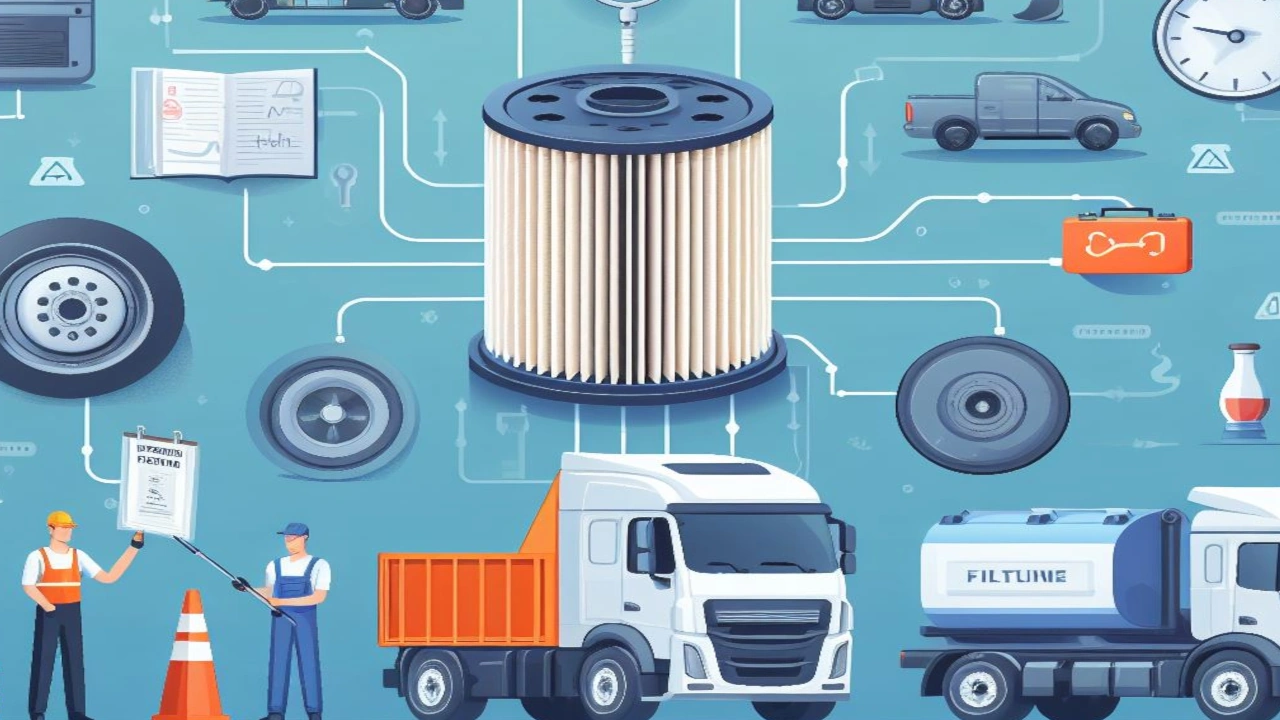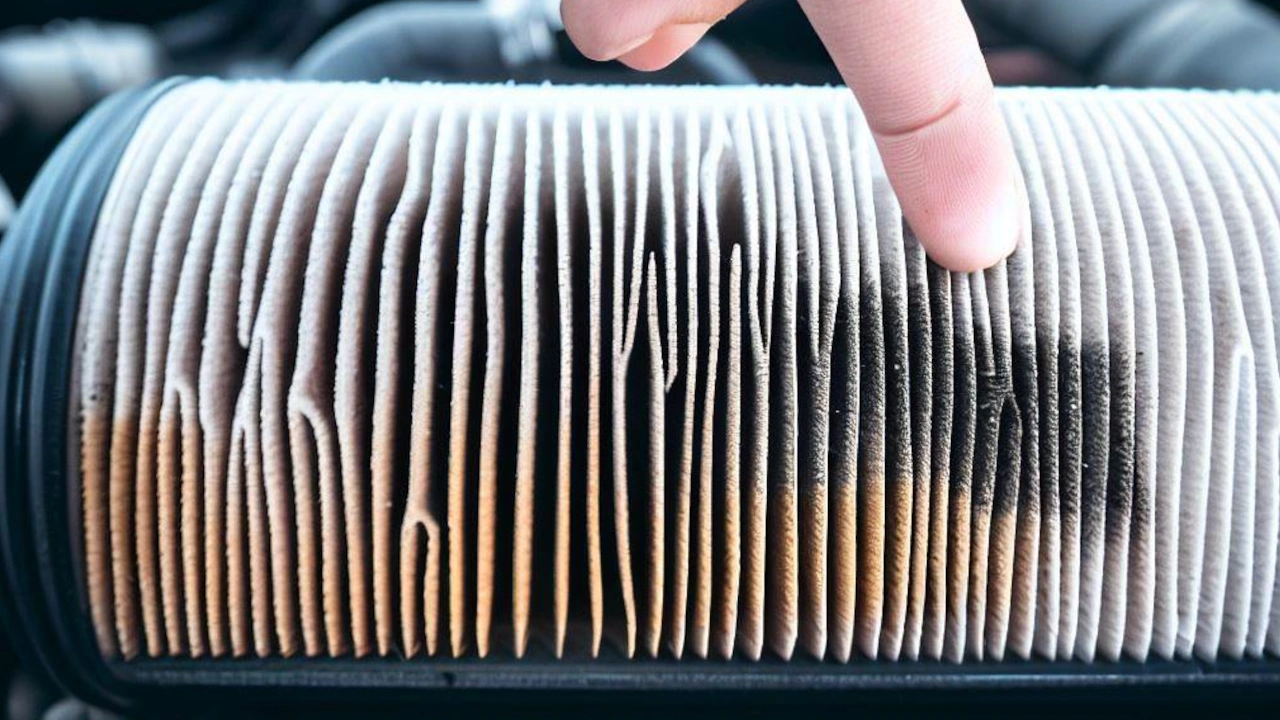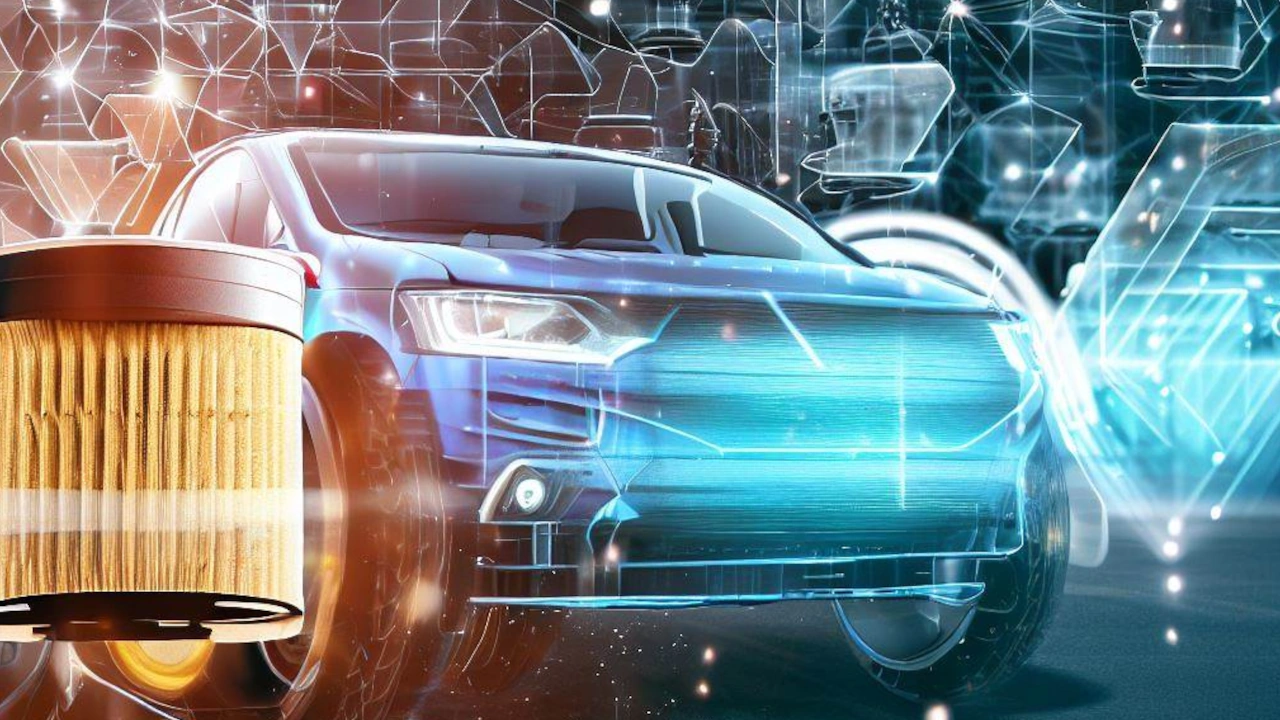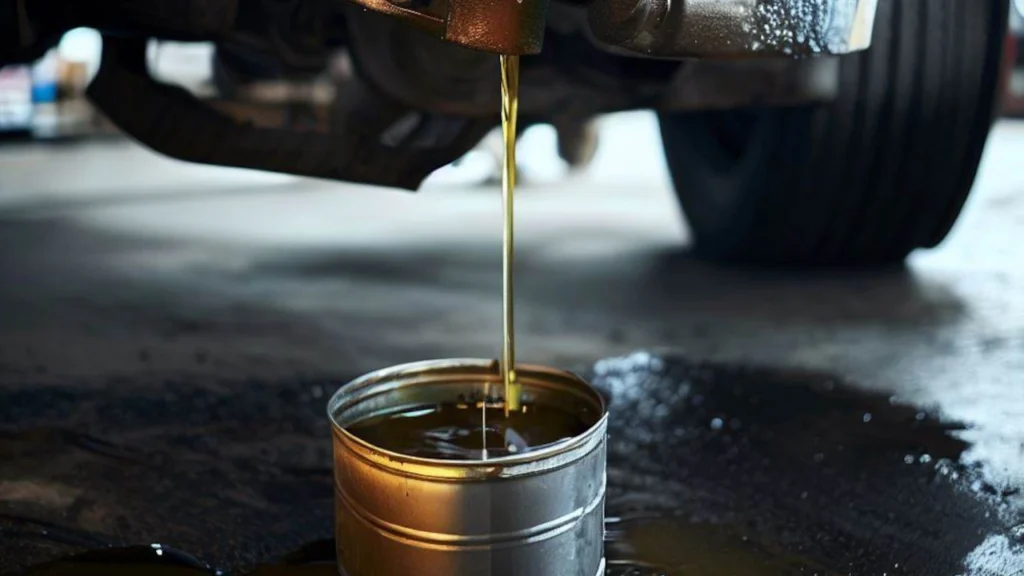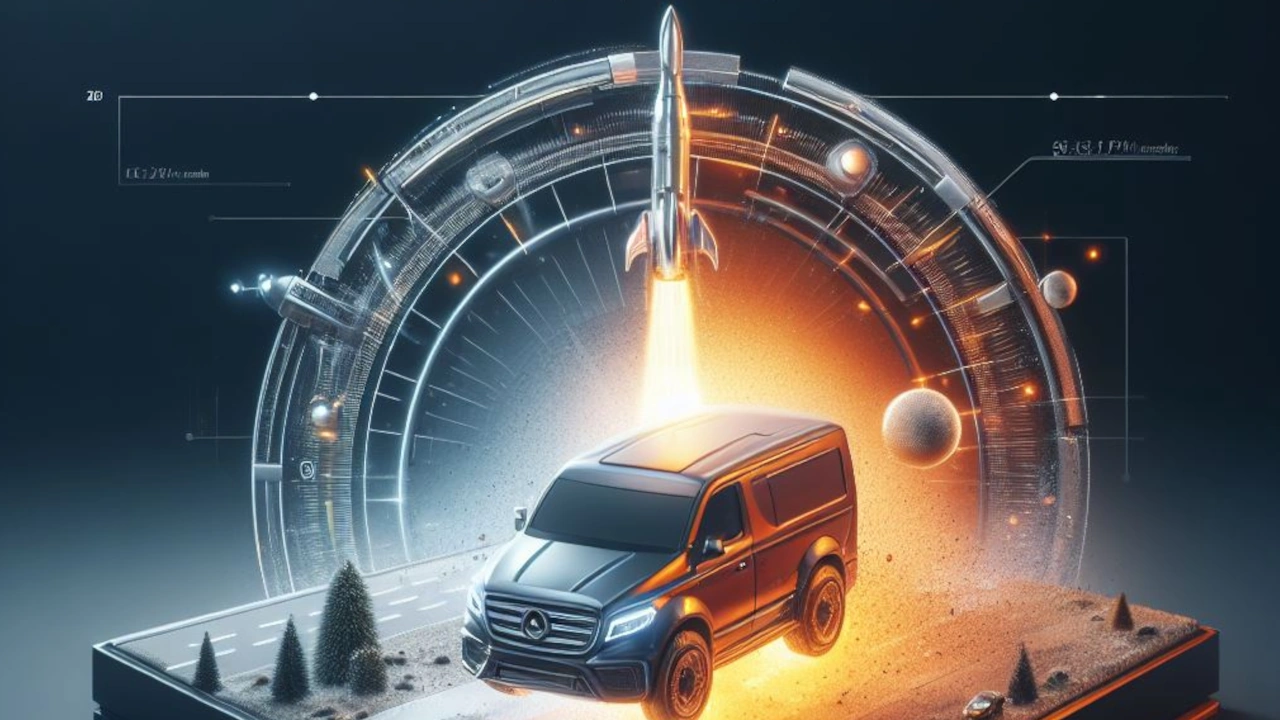- Introduction
- Brief Overview of Catalytic Converters
- Importance of Timely Catalytic Converter Repair
- Signs of Catalytic Converter Issues
- Strange Noises
- Decreased Engine Performance
- Warning Lights
- Diagnosing Catalytic Converter Problems
- Onboard Diagnostic (OBD) System
- Visual Inspection
- Professional Diagnostic Tools
- Common Catalytic Converter Repairs
- Oxygen Sensor Replacement
- Repairing or Welding Damaged Converters
- Full Catalytic Converter Replacement
- DIY Catalytic Converter Repair Tips
- Safety Precautions
- Step-by-Step Repair Guide
- Necessary Tools and Materials
- Seeking Professional Help
- When to Consult a Mechanic
- Choosing the Right Repair Shop
- Questions to Ask Your Mechanic
- Cost Considerations
- Factors Influencing Repair Costs
- Budget-Friendly Options
- Preventive Maintenance for Catalytic Converters
- Regular Inspections
- Driving Habits for Longevity
- Environmental Impact
- Legal and Environmental Implications
- Importance of Compliant Repairs
- Environmental Impact of Faulty Converters
- Compliance with Emission Standards
- Conclusion
- Recap of Key Points
- Encouragement for Timely Repairs
- Final Thoughts on Catalytic Converter Maintenance
1. Introduction
Catalytic converters play a crucial role in the performance of modern vehicles, acting as a silent guardian against harmful emissions. This introduction provides a brief overview of catalytic converters and emphasizes the paramount importance of addressing any repair needs in a timely manner.
1.1 Brief Overview of Catalytic Converters
Catalytic converters are integral components in the exhaust system of automobiles, tasked with reducing the emission of harmful pollutants into the environment. Typically made of a ceramic or metallic substrate coated with catalyst materials, these devices facilitate the conversion of toxic gases, such as carbon monoxide and nitrogen oxides, into less harmful substances like carbon dioxide and water vapor.
Understanding the basic functionality of catalytic converters sets the stage for comprehending the significance of maintaining their optimal performance.
1.2 Importance of Timely Catalytic Converter Repair
Timely intervention in the face of catalytic converter issues is not merely a matter of vehicle maintenance; it is a responsible commitment to environmental well-being. A malfunctioning catalytic converter can lead to increased emission of pollutants, contributing to air pollution and negatively impacting air quality.
Moreover, delayed repairs may escalate the extent of damage, potentially resulting in more costly solutions or even necessitating a complete replacement. By addressing catalytic converter issues promptly, vehicle owners not only ensure the longevity of their cars but also actively contribute to reducing their ecological footprint.
In the subsequent sections, we delve into the signs indicating catalytic converter problems, diagnostic methods, common repair procedures, and practical tips for both DIY enthusiasts and those seeking professional assistance. This comprehensive guide aims to empower readers with the knowledge needed to navigate catalytic converter repairs effectively.
2. Signs of Catalytic Converter Issues
Recognizing the signs of catalytic converter problems is crucial for prompt intervention and preventing further damage to your vehicle. Here, we outline common indicators that may point to issues with your catalytic converter.
2.1 Strange Noises
Unusual noises emanating from your vehicle’s exhaust system can be an early sign of catalytic converter trouble. Rattling sounds, metallic clanking, or a noticeable increase in exhaust noise may indicate a damaged or deteriorating catalytic converter. These noises often result from loose components within the converter or a catalyst substrate breakdown.
2.2 Decreased Engine Performance
A decline in overall engine performance, such as reduced acceleration, sluggish response, or poor fuel efficiency, could be linked to catalytic converter inefficiency. As the converter’s ability to facilitate proper emissions conversion diminishes, it can adversely affect the engine’s combustion processes, leading to a noticeable drop in performance.
2.3 Warning Lights
Modern vehicles are equipped with onboard diagnostic (OBD) systems that monitor various components, including the catalytic converter. If the system detects irregularities, it may trigger the illumination of the Check Engine Light on your dashboard. Ignoring this warning could result in more severe issues down the line, making it imperative to address the underlying catalytic converter concerns promptly.
Being attentive to these signs allows you to take proactive measures, whether it’s performing a visual inspection, using diagnostic tools, or seeking professional assistance. In the following sections, we explore methods for diagnosing catalytic converter problems and delve into the steps involved in effective repairs, ensuring that your vehicle continues to operate efficiently and environmentally responsibly.
3. Diagnosing Catalytic Converter Problems
Accurate diagnosis is the key to effective catalytic converter repairs. In this section, we explore various methods for diagnosing issues with your catalytic converter, enabling you to identify and address problems early on.
3.1 Onboard Diagnostic (OBD) System
Modern vehicles are equipped with sophisticated OBD systems that continuously monitor the performance of various components, including the catalytic converter. When a potential issue arises, the system triggers the Check Engine Light on your dashboard. Utilizing an OBD scanner allows you to retrieve specific error codes, providing valuable insights into the nature of the problem.
3.2 Visual Inspection
A visual inspection of the catalytic converter and its surrounding components can reveal visible signs of damage or deterioration. Look for rust, physical damage, or loose heat shields. Additionally, inspect the oxygen sensor wires for any wear or damage, as they play a crucial role in the converter’s functionality.
3.3 Professional Diagnostic Tools
For a comprehensive diagnosis, consider using professional diagnostic tools available at auto repair shops. These tools can measure the efficiency of the catalytic converter by analyzing exhaust gases and identifying any abnormalities. While these tools may require professional expertise, they provide in-depth insights into the converter’s condition.
By combining these diagnostic methods, you can gain a thorough understanding of your catalytic converter’s health. Once the issues are identified, you can proceed to the appropriate repair steps, whether it involves a DIY approach or seeking assistance from a qualified mechanic. The next sections will delve into common catalytic converter repairs, offering guidance on addressing specific issues and ensuring your vehicle’s emissions control system operates optimally.
4. Common Catalytic Converter Repairs
Understanding the common catalytic converter repairs is essential for maintaining your vehicle’s emission control system. In this section, we explore the typical issues that may arise and the corresponding repair solutions.
4.1 Oxygen Sensor Replacement
Faulty oxygen sensors can impact the catalytic converter’s efficiency. These sensors monitor the oxygen levels in the exhaust gases, providing crucial data for the converter to function optimally. If your oxygen sensors are malfunctioning, replacing them can often restore the converter’s performance and improve overall engine efficiency.
4.2 Repairing or Welding Damaged Converters
Physical damage to the catalytic converter, such as dents or punctures, can compromise its effectiveness. In some cases, especially with minor damage, welding or repairing the affected area may be a viable solution. However, it’s crucial to assess the extent of the damage and consult with a professional to determine whether repair is feasible or if replacement is the more appropriate course of action.
4.3 Full Catalytic Converter Replacement
In instances of severe damage, deterioration, or when other repair attempts are not viable, a full catalytic converter replacement may be necessary. This involves removing the old converter and installing a new one, ensuring that your vehicle meets emission standards and operates efficiently.
Understanding when to opt for each type of repair is essential for cost-effective and timely maintenance. In the subsequent sections, we explore do-it-yourself (DIY) catalytic converter repair tips for enthusiasts looking to tackle minor issues independently, as well as guidance on when to seek professional assistance for more complex problems.
5. DIY Catalytic Converter Repair Tips
For automotive enthusiasts and hands-on individuals, addressing certain catalytic converter issues through do-it-yourself (DIY) methods can be a rewarding and cost-effective approach. Here, we provide practical tips for DIY catalytic converter repairs, emphasizing safety and proper execution.
5.1 Safety Precautions
Before embarking on any DIY repair, prioritize safety. Ensure the vehicle is on a stable surface, wear appropriate protective gear, and disconnect the battery to avoid electrical hazards. Work in a well-ventilated area, as you may be dealing with exhaust gases, and use jack stands to secure the vehicle.
5.2 Step-by-Step Repair Guide
- Identify the Issue: Diagnose the problem using methods outlined in previous sections, such as visual inspection and OBD system readings.
- Access the Converter: Locate the catalytic converter under the vehicle. Depending on your vehicle’s make and model, you may need to lift the car to gain better access.
- Inspect for Damage: Examine the converter for visible damage, such as dents or punctures. If the damage is minimal, welding or patching may be an option.
- Oxygen Sensor Replacement: If the issue is related to faulty oxygen sensors, follow the manufacturer’s guidelines to replace them. This often involves disconnecting the old sensors and connecting the new ones in their place.
- Welding or Patching: If you’re confident in your welding skills and the damage is repairable, carefully weld or patch the affected area. Ensure a secure and airtight seal.
- Test the Repair: After completing the repair, start the vehicle and monitor for any unusual sounds or signs of improvement. Additionally, check for any new issues that may have emerged during the repair process.
5.3 Necessary Tools and Materials
Gather the required tools and materials before starting the DIY repair. This may include a welder (if welding is necessary), replacement oxygen sensors, protective gear, jack stands, and any specific tools recommended by your vehicle’s manufacturer.
While DIY repairs can be fulfilling, it’s essential to recognize your skill level and the complexity of the issue. For more intricate problems or if you’re unsure about the repair process, seeking professional assistance is advisable. In the subsequent sections, we explore when it’s appropriate to consult a mechanic, how to choose the right repair shop, and considerations for managing repair costs effectively.
6. Seeking Professional Help
While DIY repairs can be satisfying, some catalytic converter issues may require the expertise of a professional mechanic. In this section, we outline when it’s appropriate to seek professional assistance, how to choose the right repair shop, and key considerations for a seamless collaboration.
6.1 When to Consult a Mechanic
Certain scenarios warrant the expertise of a qualified mechanic:
- Complex Issues: If the catalytic converter problem is intricate, involving internal components or requiring specialized diagnostic tools, it’s advisable to consult a professional.
- Full Replacement: When a full catalytic converter replacement is necessary, professional installation ensures proper fitting and adherence to emission standards.
- Limited DIY Experience: If you’re uncertain about your DIY skills or lack experience with catalytic converter repairs, seeking professional help prevents potential mistakes that could exacerbate the issue.
6.2 Choosing the Right Repair Shop
When selecting a repair shop for catalytic converter issues, consider the following:
- Experience and Reputation: Opt for a repair shop with a proven track record in handling exhaust system and emission-related repairs. Check online reviews and ask for recommendations.
- Certifications: Ensure the mechanics are certified and trained to work on your specific vehicle make and model. Certifications from organizations like the National Institute for Automotive Service Excellence (ASE) are indicative of expertise.
- Diagnostic Equipment: A well-equipped repair shop with modern diagnostic tools can accurately assess catalytic converter problems, leading to more precise and effective repairs.
6.3 Questions to Ask Your Mechanic
Before authorizing any repairs, ask your mechanic the following questions:
- Diagnostic Process: Inquire about the diagnostic process they will use to identify the catalytic converter issue.
- Repair Options: Understand the available repair options, associated costs, and the potential outcomes of each.
- Warranty: Check if the repair shop offers a warranty on parts and labor. A warranty provides assurance in the event of post-repair issues.
By selecting a reputable repair shop and communicating effectively with your mechanic, you ensure a smoother repair process and optimal performance of your catalytic converter. In the following sections, we delve into cost considerations, preventive maintenance measures, and the legal and environmental implications of catalytic converter repairs.
7. Cost Considerations
Understanding the costs associated with catalytic converter repairs is crucial for budgeting and making informed decisions. In this section, we explore the factors influencing repair costs and offer tips on managing expenses effectively.
7.1 Factors Influencing Repair Costs
Several factors contribute to the overall cost of catalytic converter repairs:
- Extent of Damage: The severity of the issue, whether it’s a minor repair, welding, or a complete replacement, significantly influences the cost.
- Vehicle Make and Model: Different vehicles have varying catalytic converter designs and accessibility. The complexity of working on specific models may affect labor costs.
- Type of Repair: Replacing oxygen sensors, welding, or patching are generally less expensive than a full catalytic converter replacement. The type of repair required impacts the overall cost.
- Quality of Parts: The quality and brand of replacement parts, including the catalytic converter itself, influence costs. Opting for high-quality, OEM (Original Equipment Manufacturer) parts may be pricier but can ensure better performance and durability.
- Labor Costs: Labor charges vary based on the repair shop’s rates and the time required for the specific repair.
7.2 Budget-Friendly Options
To manage catalytic converter repair costs effectively:
- Compare Quotes: Obtain quotes from multiple repair shops to ensure you’re getting a fair estimate. Don’t hesitate to negotiate or ask for discounts.
- Consider Used Parts: Depending on the repair needed, using quality, used catalytic converters or oxygen sensors may be a cost-effective option. Ensure the parts are in good condition and meet emission standards.
- Explore Warranty Coverage: If your vehicle is still under warranty, check if catalytic converter issues are covered. Additionally, inquire about warranties offered by the repair shop for parts and labor.
- Regular Maintenance: Adhering to a routine maintenance schedule can help prevent major catalytic converter issues, saving you money in the long run.
By being proactive, comparing costs, and exploring budget-friendly options, you can manage catalytic converter repair expenses effectively. In the subsequent sections, we delve into preventive maintenance measures to extend the life of your catalytic converter and explore the legal and environmental implications of compliant repairs.
8. Preventive Maintenance for Catalytic Converters
Preventive maintenance is key to ensuring the longevity and optimal performance of your catalytic converter. In this section, we outline practical measures to prevent issues and extend the life of your vehicle’s emission control system.
8.1 Regular Inspections
- Visual Checks: Periodically inspect the catalytic converter for visible damage, rust, or loose components. Addressing issues at the early stages can prevent further damage.
- Exhaust System Inspection: Include the entire exhaust system in your inspections. Ensure that pipes, mufflers, and hangers are in good condition to avoid undue stress on the catalytic converter.
8.2 Driving Habits for Longevity
- Warm-Up Periods: Allow your vehicle to warm up before driving, especially in colder weather. This helps in reaching optimal operating temperatures, promoting efficient catalytic converter performance.
- Avoid Rough Driving: Limit aggressive driving habits, such as rapid acceleration or sudden stops. Smooth driving reduces stress on the catalytic converter and other engine components.
- Quality Fuel: Use high-quality fuel to minimize the accumulation of deposits in the converter. Quality fuel contributes to cleaner combustion and reduces the risk of catalyst contamination.
8.3 Environmental Impact
- Emission Testing: Adhere to emission testing requirements in your region. Regular testing ensures that your vehicle meets emission standards, and any issues with the catalytic converter can be addressed promptly.
- Compliant Repairs: When repairs are necessary, opt for compliant solutions that meet emission standards. This not only ensures environmental responsibility but also helps you avoid legal implications associated with non-compliant vehicles.
8.4 Timely Repairs and Replacements
- Address Issues Promptly: If you notice any signs of catalytic converter problems, address them promptly. Timely repairs prevent further damage and can save you from more costly solutions.
- Follow Manufacturer Recommendations: Adhere to the manufacturer’s recommended maintenance schedule. This includes replacing oxygen sensors at specified intervals and addressing other components that contribute to catalytic converter health.
By incorporating these preventive maintenance measures into your vehicle care routine, you can significantly reduce the risk of catalytic converter issues and contribute to a cleaner, more efficient vehicle operation. In the final sections, we discuss the legal and environmental implications of catalytic converter repairs, emphasizing the importance of compliant solutions.
9. Legal and Environmental Implications
Catalytic converter repairs carry legal and environmental considerations that should not be overlooked. In this section, we explore the impact of repairs on emissions standards, environmental responsibility, and legal compliance.
9.1 Importance of Compliant Repairs
- Emission Standards: Catalytic converters play a crucial role in reducing harmful emissions from vehicles. Any repair or replacement must adhere to the emission standards set by regulatory authorities. Non-compliant repairs can result in increased pollution and legal consequences.
- Legal Compliance: Vehicle emissions are subject to regulations in many regions. Non-compliant repairs may lead to fines, penalties, or restrictions on vehicle use. It’s essential to choose repair options that meet or exceed these standards.
9.2 Environmental Impact of Faulty Converters
- Air Quality: A malfunctioning catalytic converter can contribute to increased air pollution, negatively impacting local air quality. This, in turn, can lead to respiratory issues and other health concerns for both humans and animals.
- Ecological Consequences: Harmful emissions from vehicles, including those with faulty catalytic converters, can contribute to environmental problems such as smog formation and acid rain. Consistent compliance with emission standards helps mitigate these ecological consequences.
9.3 Compliance with Emission Standards
- Certified Repairs: Choose repair shops and technicians certified to perform emission-related repairs. Certification ensures that the repairs align with the required standards and contribute to environmental sustainability.
- Emission Testing: In regions where emission testing is mandatory, ensure that your vehicle passes these tests after catalytic converter repairs. A compliant vehicle not only meets legal requirements but also actively contributes to environmental conservation.
9.4 Environmental Responsibility
- Proper Disposal: If a catalytic converter replacement is necessary, ensure that the old converter is disposed of properly. Many components in converters are recyclable, and responsible disposal prevents environmental contamination.
- Educational Initiatives: Stay informed about the environmental impact of vehicle emissions and catalytic converter functionality. Support and participate in educational initiatives that promote sustainable driving practices and responsible vehicle ownership.
By prioritizing compliant repairs, staying informed about emission standards, and adopting environmentally responsible practices, vehicle owners contribute to a cleaner, healthier environment. In conclusion, this comprehensive guide provides insights into catalytic converter repair, from recognizing signs of issues to proactive preventive measures and considerations for legal and environmental responsibility.
10. Conclusion
In conclusion, understanding the significance of catalytic converter repair is essential for vehicle owners seeking to maintain both the performance of their cars and environmental responsibility. The catalytic converter, a critical component in the emission control system, plays a pivotal role in reducing harmful pollutants emitted by vehicles.
This guide has walked you through various aspects of catalytic converter repair, starting with the importance of timely interventions and the signs indicating potential issues. We explored diagnostic methods, common repair procedures, and provided practical tips for both do-it-yourself enthusiasts and those seeking professional assistance. Emphasizing safety precautions and the necessary tools, we outlined the steps for effective DIY repairs and discussed when it’s prudent to consult a mechanic.
Cost considerations were explored, guiding you on factors influencing repair costs and offering budget-friendly options. Preventive maintenance measures were highlighted to extend the life of your catalytic converter, emphasizing regular inspections, driving habits, and environmental responsibility.
The legal and environmental implications of catalytic converter repairs were discussed, stressing the importance of compliant solutions to meet emission standards and contribute to a cleaner, healthier environment. Being environmentally responsible involves proper disposal of components and supporting educational initiatives for sustainable driving practices.
In essence, this guide serves as a comprehensive resource, equipping you with the knowledge to make informed decisions about catalytic converter repair. By understanding the signs, implementing preventive measures, and choosing compliant repair options, you contribute not only to the longevity of your vehicle but also to the well-being of the environment. Prioritizing timely and responsible maintenance ensures that your vehicle continues to operate efficiently while minimizing its ecological footprint.


